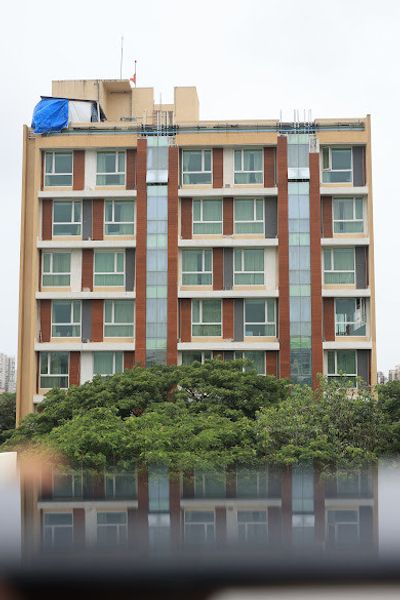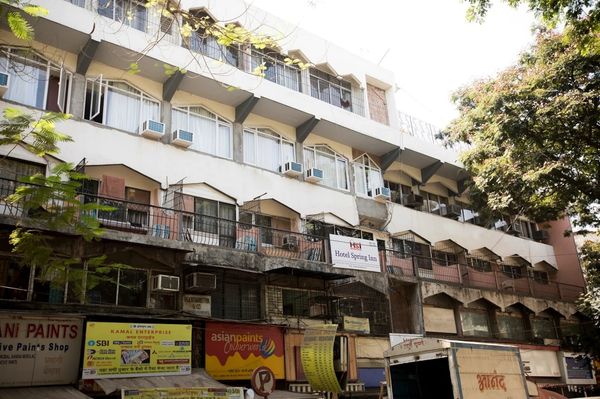Hemkund Sahib | Best Time, Temperature, Distance & More
 Mountains Curve
20 Jul, 2025
20 mins read
27
Mountains Curve
20 Jul, 2025
20 mins read
27
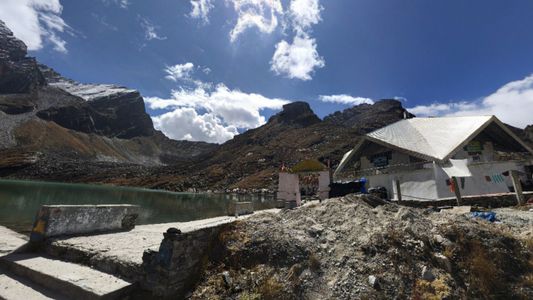
Nestled high in the Garhwal Himalayas of Uttarakhand, Hemkund Sahib is one of the holiest Sikh shrines and among the highest gurudwaras in the world. Located at a staggering altitude of 4329 meters (14,203 feet) in the Chamoli district, it is revered not only for its religious significance but also for its breathtaking natural beauty. Surrounded by seven snow-capped peaks, each adorned with a Nishan Sahib, Hemkund Sahib sits peacefully beside a pristine glacial lake – Hemkund Lake.
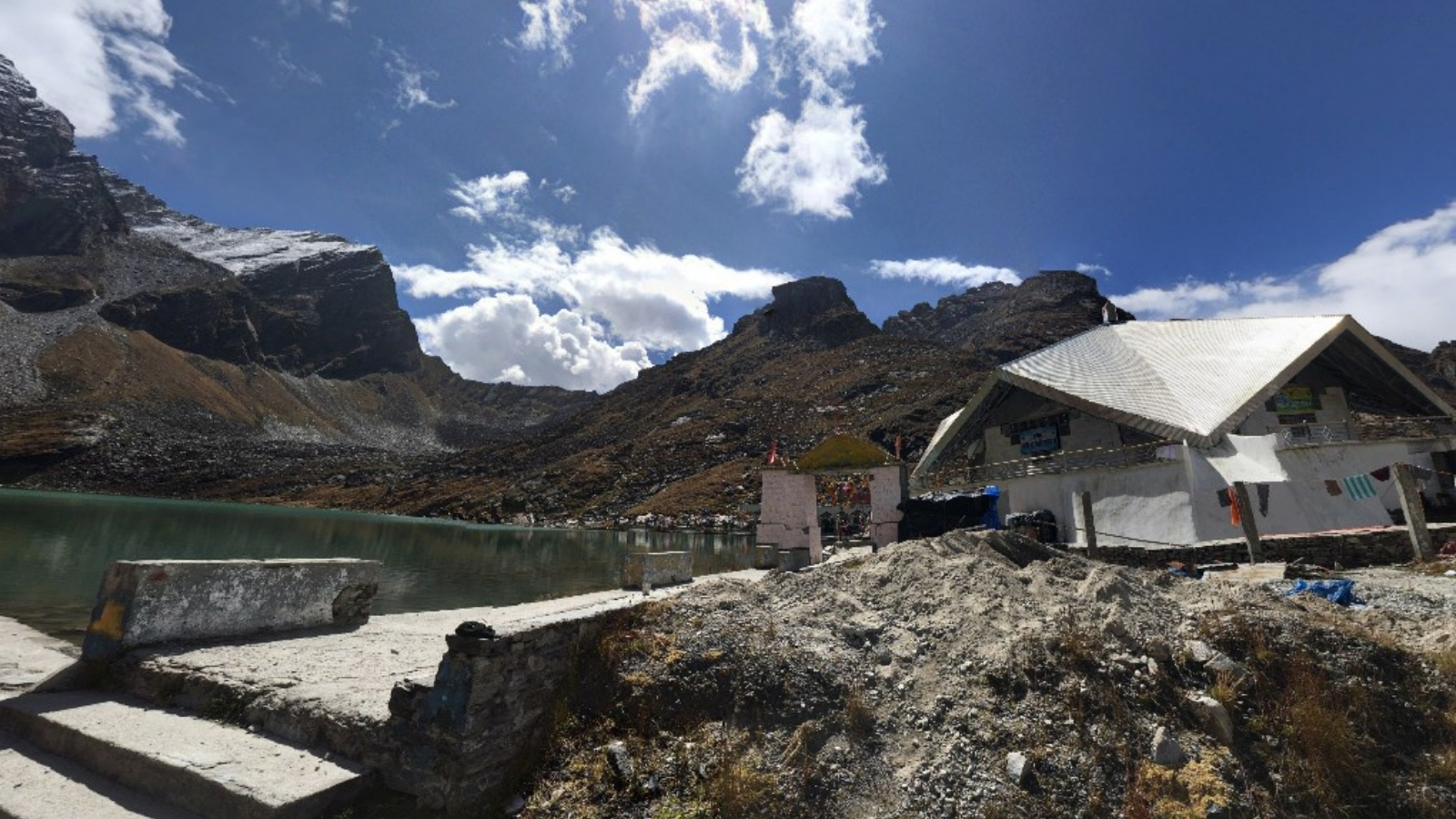
Historical and Spiritual Significance

Hemkund Sahib is dedicated to Guru Gobind Singh Ji, the tenth Sikh Guru. The site finds mention in his autobiographical work, Bachittar Natak, part of the Dasam Granth. In this text, Guru Sahib describes Hemkund (Hemkunt) as the place where he meditated in a previous birth:
"Hemkunt parbat hae jahan, sapat sring sobhit hae tahan"
(Hemkunt mountain is auspiciously situated among the seven peaks...)
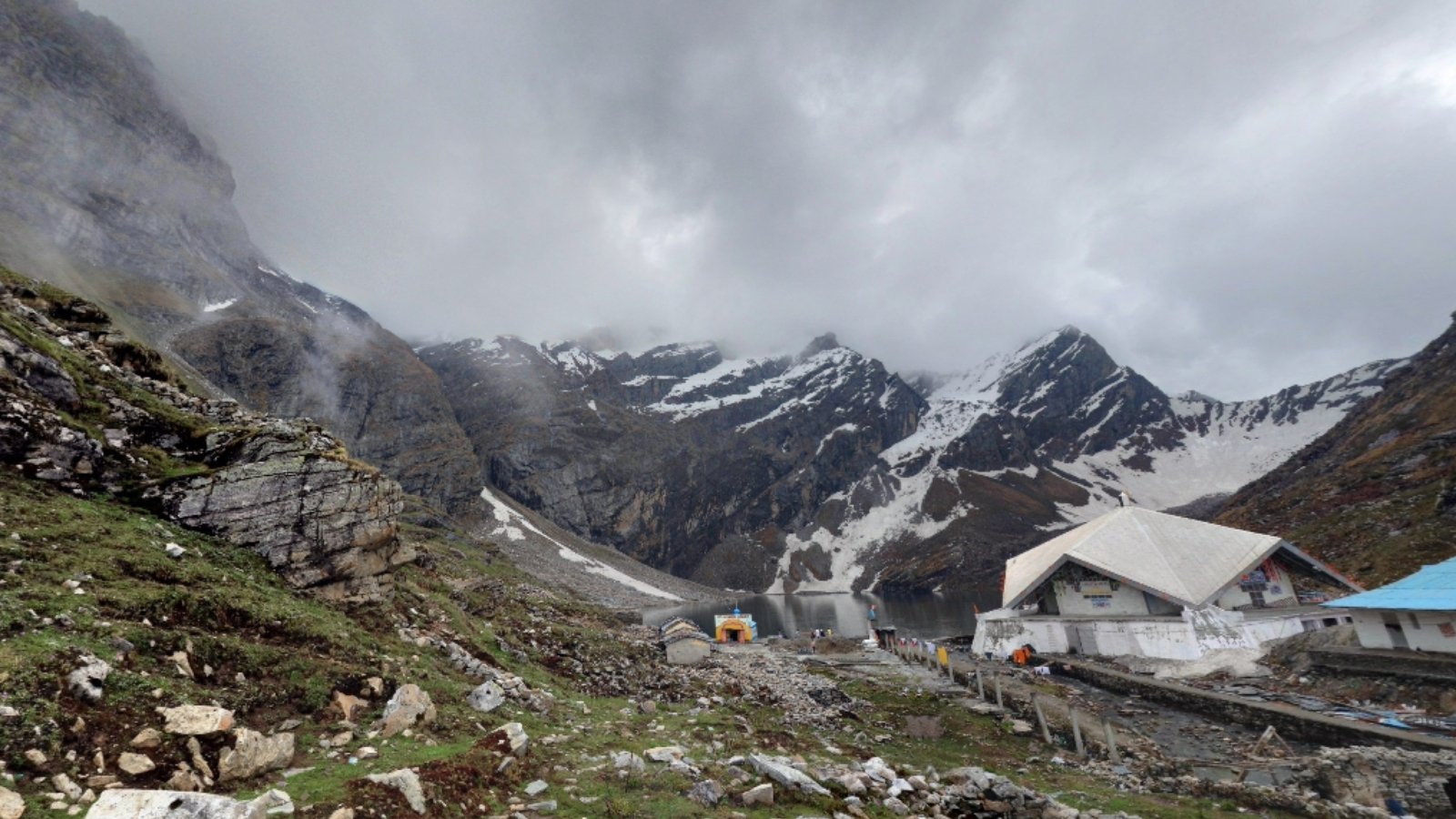
The spiritual aura of Hemkund is amplified by its association with deep meditation and divine revelation. According to Sikh tradition, Guru Gobind Singh meditated here on Akaal Purakh (the Timeless Being) before taking human birth. This connection makes the site incredibly sacred in Sikhism.
Additionally, Hindu legends suggest that Lakshmana, the brother of Lord Rama, also meditated here to recover from his battle injuries, and a Lakshmana Temple stands near the lake commemorating this belief.
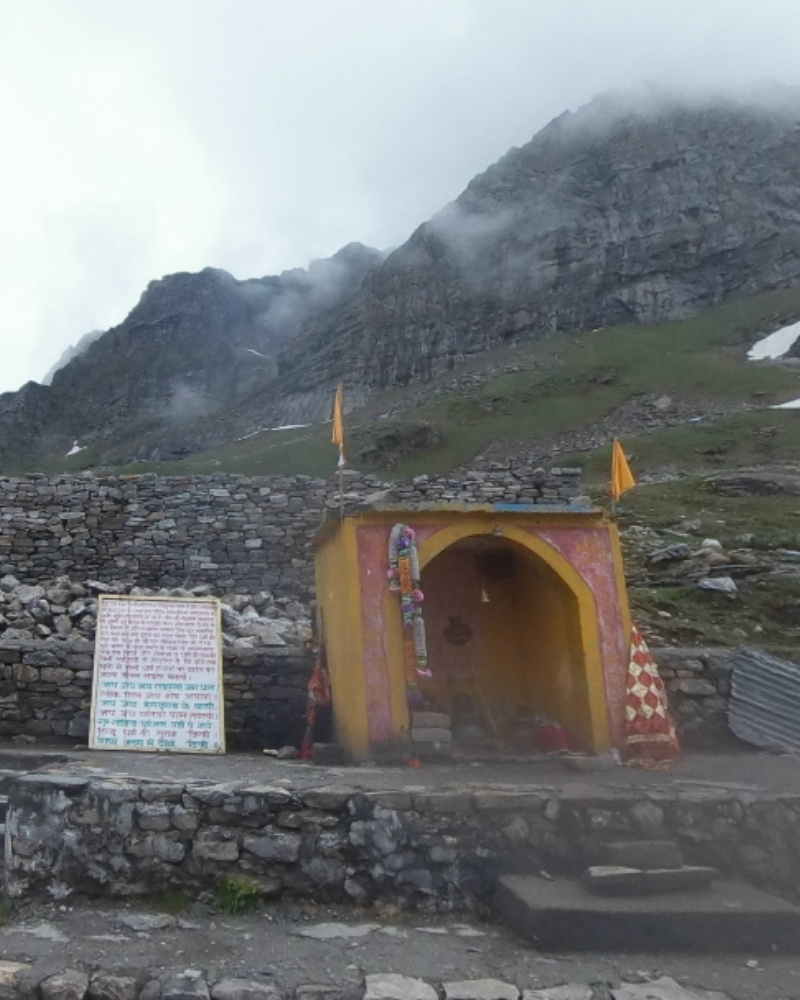
The Journey and Pilgrimage
The Hemkund Sahib Yatra is a challenging yet spiritually rewarding pilgrimage. The journey begins from Govindghat, a small town located about 275 km from Rishikesh and well-connected by road. Pilgrims trek approximately 9 km to Ghangaria (also known as Govind Dham), from where an additional 6 km stone-paved ascent leads to Hemkund Sahib.
Although a portion of the path (4 km) can be covered by shared taxis, the rest involves steep climbing, which can be done on foot or by pony. Overnight stay is not permitted at Hemkund Sahib due to high altitude risks, so pilgrims must descend the same day.
In recent years, a helicopter service has started between Govindghat and Ghangaria, reducing travel time and adding convenience, especially for elderly or physically challenged visitors.
The shrine remains inaccessible from October through April due to heavy snowfall. Each year, in May, Sikh volunteers arrive early to repair paths and restore the route through kar seva (selfless service), a key tenet of Sikh philosophy. The pilgrimage typically begins in late May and continues until early October.
Architecture and Present-Day Gurudwara
The current structure of Gurudwara Sri Hemkund Sahib is a marvel of engineering. Designed by Architect Manmohan Singh Siali under the guidance of Major General Harkirat Singh, construction began in the 1960s. Despite extreme altitude and harsh conditions, the gurudwara was completed with the collective efforts of Sikh devotees and the vision of early pioneers like Sant Sohan Singh ji, Bhai Vir Singh ji, and Hawaldar Modan Singh ji.
The gurudwara's unique pentagonal structure is designed to withstand extreme Himalayan weather. Inside, it houses the Guru Granth Sahib, the eternal Guru of the Sikhs, and offers a tranquil space for prayer and reflection.
Hemkund Lake and Natural Beauty
The crystal-clear Hemkund Lake, beside which the gurudwara is situated, adds to the site’s serene atmosphere. Known as Hem (snow) and Kund (bowl) in Sanskrit, the lake reflects the surrounding snowy peaks and is fed by glaciers. The Lakshman Ganga, a small stream, originates from here.
Hemkund’s untouched beauty and spiritual ambiance offer solace to pilgrims and trekkers alike. The lake remains frozen for much of the year, only thawing briefly during the pilgrimage season.
Health and Safety Considerations
Visiting Hemkund Sahib, situated at a lofty altitude of 4329 meters (14,203 feet), is a spiritually enriching experience, but it demands serious consideration of health and safety, especially due to the rugged terrain and high elevation. The thin mountain air and physically demanding trek make preparation essential, particularly for first-time visitors, the elderly, and those with preexisting medical conditions.
Altitude Sickness, particularly Acute Mountain Sickness (AMS), is a primary concern for pilgrims. A recent medical study revealed that nearly one-third of travelers to Hemkund suffer from AMS symptoms, which include headache, dizziness, nausea, shortness of breath, fatigue, and insomnia. These symptoms typically begin above 2,500 meters, making Hemkund a high-risk zone. The risk increases due to rapid ascent, insufficient hydration, and lack of acclimatization.
To mitigate AMS, visitors are strongly advised to spend a day in Ghangaria (the base camp at 3,099 meters) before proceeding to Hemkund Sahib. This acclimatization period helps the body adjust to the higher elevation. Pilgrims should drink plenty of water, eat light but energy-rich meals, and avoid alcohol and smoking, which worsen dehydration and altitude sickness.
Another aspect to consider is physical fitness. The 9 km trek from Govindghat to Ghangaria followed by a steep 6 km climb to Hemkund Sahib requires considerable stamina. Individuals with heart or respiratory conditions should consult a doctor before planning the journey. Wearing appropriate trekking shoes, warm layered clothing, and rain gear is crucial, as weather in the region can shift rapidly, often bringing sudden showers or snow, even in summer months.
Medical facilities along the trail are limited. While Ghangaria has basic first-aid services, it’s advisable to carry a personal medical kit including painkillers, altitude sickness medication (like Diamox), and bandages for minor injuries or blisters.
Lastly, given the remote and ecologically sensitive environment, maintaining eco-conscious behavior is vital. Avoid littering, use biodegradable toiletries, and adhere to guidelines issued by local authorities and the Gurudwara management.
Planning responsibly ensures that this divine journey remains safe, spiritually uplifting, and respectful to the natural surroundings.
How to Reach Hemkund Sahib
Reaching Hemkund Sahib, one of the highest and most scenic Sikh pilgrimage sites, involves a multi-stage journey combining air, rail, road, and trekking. Despite its remote location in the Himalayas, the route to Hemkund Sahib is well-established and rewarding for those seeking both spiritual fulfillment and adventure.
The journey typically starts from Delhi or Haridwar, from where pilgrims make their way to Govindghat, the gateway to Hemkund Sahib. Located approximately 500 kilometers from Delhi, Govindghat is situated on the Rishikesh-Badrinath highway (NH7) and is accessible by road from major towns such as Rishikesh, Haridwar, Dehradun, and Kotdwar.
- By Air: The nearest airport is Jolly Grant Airport in Dehradun, around 334 km from Govindghat. From Dehradun, taxis and buses are available to reach Govindghat via Rishikesh and Joshimath.
- By Train: The closest railway station is Rishikesh, about 300 km away. Rishikesh is well-connected by rail to major cities like Delhi, Haridwar, and Dehradun. After reaching Rishikesh, travelers typically proceed to Govindghat by road.
- By Road: From Rishikesh, the drive to Govindghat takes approximately 10 to 12 hours, depending on road and weather conditions. The route offers stunning views of rivers, valleys, and mountain ranges, making the long drive part of the pilgrimage experience.
From Govindghat, the trek begins. Pilgrims must cover a 9 km route to Ghangaria, a journey that can be undertaken on foot, by pony, or via shared jeep taxis for the initial 4 km to Pulna. The final 6 km climb from Ghangaria to Hemkund Sahib is steep and physically demanding, requiring 4 to 6 hours each way depending on fitness levels.
For those with limited mobility or time constraints, a helicopter service is available between Govindghat and Ghangaria, reducing the travel time to about 5 minutes. This service is weather-dependent and must be booked in advance, especially during peak pilgrimage season.
Overall, reaching Hemkund Sahib is an enriching experience in itself, blending spiritual anticipation with the challenges and triumphs of high-altitude travel.
When to Visit (Months, Opening Dates and Timings)
The best time to visit Hemkund Sahib is during the annual pilgrimage season, which typically begins in late May and continues until early October. The shrine remains closed for the rest of the year due to extreme cold, heavy snowfall, and treacherous terrain.
The official yatra opens around May 25th, marked by Nagar Kirtans (religious processions) that travel from Govindghat to Ghangaria and then to Hemkund Sahib. The reopening of the Gurudwara after winter closure is a deeply spiritual event, and many devotees participate in kar seva (voluntary service) to help repair the trail and restore facilities damaged by snow and landslides.
- June and early July are among the most popular months to undertake the yatra. The weather is generally favorable, with moderate temperatures and manageable rainfall. The skies are clearer, and the surrounding snow-capped peaks and glacial lake offer breathtaking views. However, early-season visitors should be prepared for lingering snow patches on the trail.
- July to August, during the monsoon, brings lush greenery and vibrant wildflowers to the region. This is also the peak blooming season for the nearby Valley of Flowers, which becomes a popular side excursion for pilgrims. However, this period also sees frequent landslides, slippery trails, and heavy rain, making trekking riskier. Trekkers must carry rain gear and be extra cautious.
- September to early October offers another excellent window for visiting Hemkund Sahib. The monsoon rains subside, the skies clear again, and the crowds start thinning. The crisp autumn air and golden landscapes provide a serene backdrop for spiritual reflection. The pilgrimage season concludes with the closure of the Gurudwara around October 10th, as snow begins to return to the region.
Visitors should avoid planning their journey outside the official season, as the trail becomes impassable and services like accommodation, medical aid, and food stalls are unavailable.
In summary, the best time to visit Hemkund Sahib is late May to early October, with June and September being particularly ideal for comfortable trekking and scenic beauty.
Nearby Destinations
The pilgrimage to Hemkund Sahib is not just about reaching a single destination  it opens the door to explore a collection of spiritually significant and naturally stunning locations in the Garhwal Himalayas. Several nearby destinations complement the Hemkund experience and are worth adding to your itinerary.
Valley of Flowers Trek
Listed as UNESCO World Heritage site, the Valley of Flowers trek is a scenic trail located in the state of Uttarakhand, India. Its expansive flowery meadows, cascading waterfalls, views of Himalayan peaks, gushing water streams, and rich biodiversity with over 600 species of wildflowers carpeting the valley make it a major attraction for nature lovers, trekking enthusiasts, and botanists from around the world.
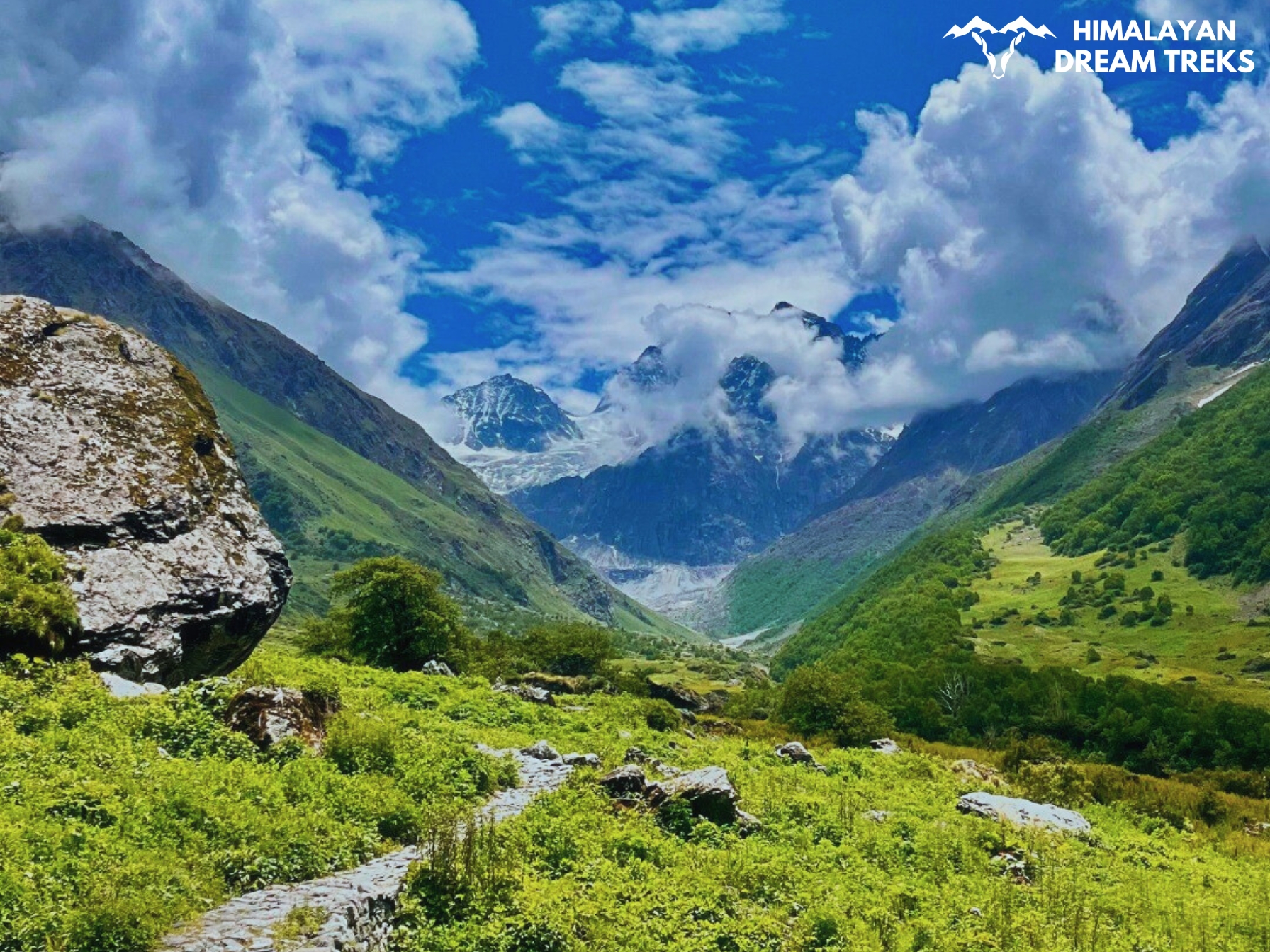
The trek to the Valley of Flowers is relatively easy, while the Hemkund Sahib route is considered a little bit challenging for beginners. Overall, the trek is moderate in difficulty and perfectly suited for beginners with decent fitness. Reaching an altitude of 3,200 m (~10,498 ft) with several gradual and steep ascents, it covers a total trekking distance of approximately 40 km, starting and ending at Govindghat via Hemkund Sahib (4,329 m/14,203 ft), which takes 6 days (including the drive from and to Rishikesh) to cover the entire trek route. If it’s about the visit to the Valley of Flowers National Park only, then it takes around 5–7 hours, covering a trekking distance of approximately 8 km for round trip, starting and ending at the Ghangaria base camp. It’s a monsoon trek, and the best time to visit the trek is between mid-July and mid-August, when the valley is in full bloom and you see many cascading waterfalls, making it perfect for birdwatchers and nature enthusiasts.
Badrinath
Located about 25 km from Govindghat, Badrinath is one of the Char Dham pilgrimage sites of Hinduism. Dedicated to Lord Vishnu, the Badrinath Temple attracts thousands of devotees from around the world. Situated along the banks of the Alaknanda River, this town is not only sacred but also scenically endowed, making it an ideal place for both religious travelers and landscape photographers.
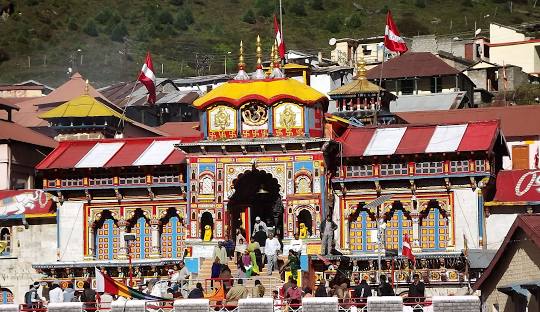
Ghangaria (Govind Dham)
This small hamlet serves as the base camp for Hemkund Sahib and Valley of Flowers. While most pilgrims pass through Ghangaria, staying here overnight is essential due to the restriction on staying at Hemkund Sahib. The village has several gurudwaras, hotels, campsites, and food stalls, offering pilgrims basic but comfortable accommodations. Surrounded by forested slopes and mountain streams, Ghangaria is a peaceful spot to rest, reflect, and prepare for the next leg of the journey.
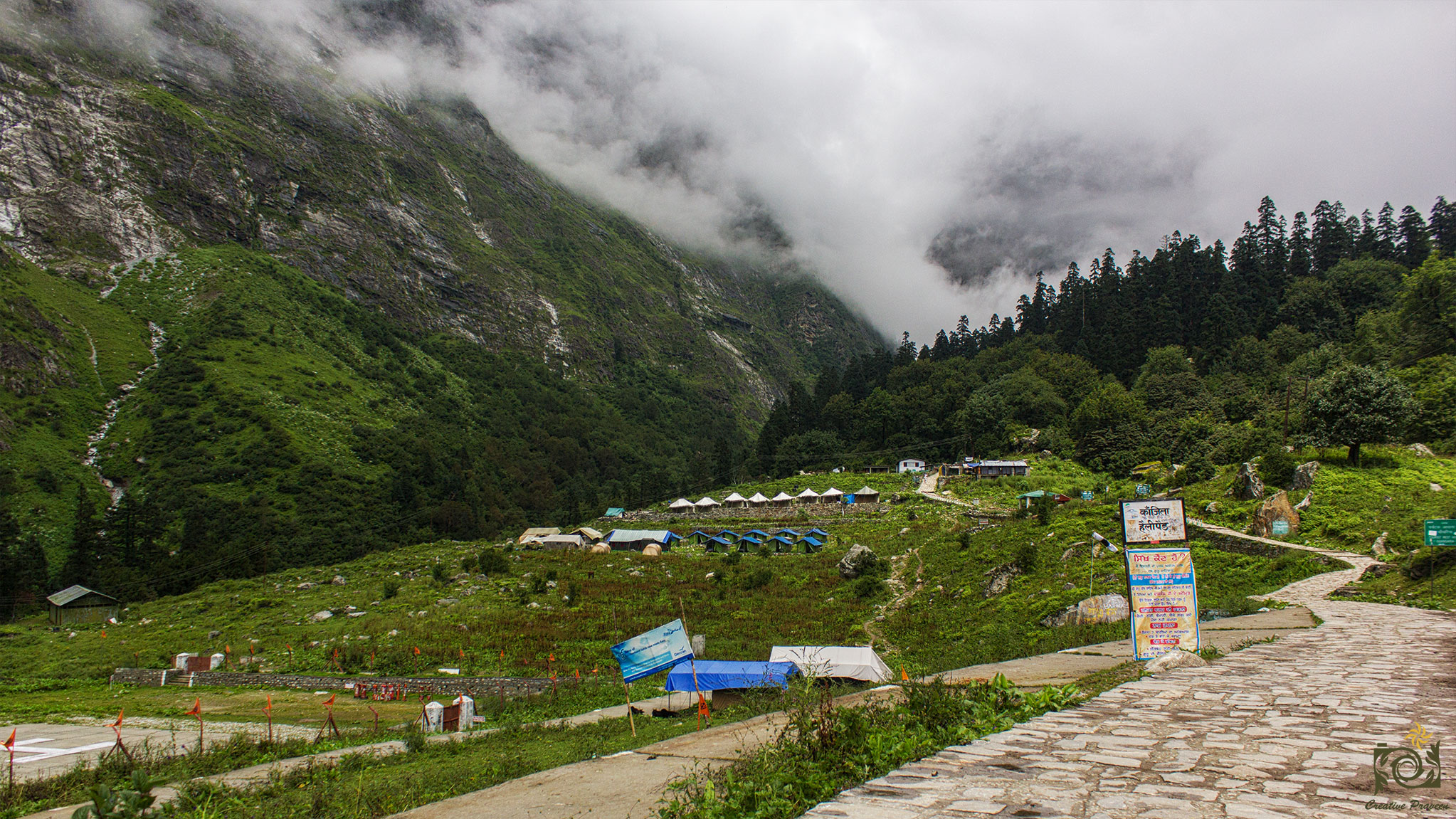
Joshimath
On the way to Govindghat, many travelers stop at Joshimath, a sacred town that serves as a base for treks to Auli, Nanda Devi National Park, and the Kuari Pass. It is also the winter seat of the Badrinath idol and home to the ancient Adi Shankaracharya Math, adding to its religious importance.
Each of these destinations adds a unique spiritual, cultural, or natural dimension to the Hemkund pilgrimage. Whether you're a devoted Sikh, a Hindu pilgrim, or a nature lover, these nearby locations enrich the overall experience and offer opportunities for deeper exploration.
Conclusion
Hemkund Sahib is more than just a pilgrimage; it's a journey of spiritual awakening, community service, and natural wonder. Whether you're drawn by its religious significance, inspired by the legacy of Guru Gobind Singh Ji, or simply captivated by its Himalayan majesty, Hemkund Sahib leaves an everlasting imprint on the soul.
With its holy lake, majestic peaks, and a deep-rooted spiritual history, Hemkund Sahib stands as a testament to faith, resilience, and the profound connection between nature and divinity.
Written By:
Mountains Curve



Hotels at your convenience
Now choose your stay according to your preference. From finding a place for your dream destination or a mere weekend getaway to business accommodations or brief stay, we have got you covered. Explore hotels as per your mood.
